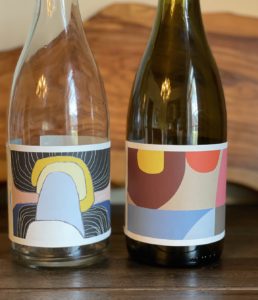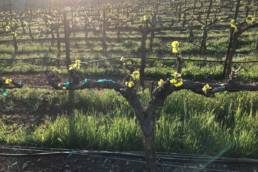Alkina Winery, Barossa Valley – My Australian Rediscovery
I know I preach about trying new wines from countries, appellations and varieties that you have not yet had the chance to experience. The content piece paying homage to the history, food and wine of Georgia, for example. Revisiting past wine experiences can also be quite interesting and full of unexpected discovery. Currently on my ascension toward self-actualization, this is the rung of the ladder I find myself clinging to.
I have always had great respect for Australian wines for not only the diversity but for the extremely limited growing regions with respect to the size of the country as a whole. Viticulture is limited to a large central and southern portion of New South Wales stretching along the coast westward into South Australia. A noncontiguous wine area in Western Australia located along the coastal southwestern horn, is well known for quality producers but at less quantity compared to the other regions. Tasmania also have some wine production albeit not much can be found in export markets.
Australian Wine Industry Issues
Almost 60% of Australian wine is exported and of that number, the American account for only 31%. This number was larger and, in the recent past, Australian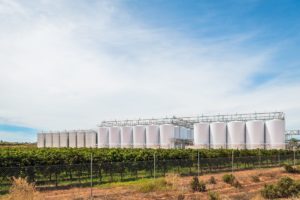 wines held a generous amount of retail store shelf real estate. Over the last few decades Australia, in general, has slipped in the rankings of the American market. I believe some of this had to do with the increase in quantity to keep up with demand lowered the average quality of the Australian brand in general. There were always quality driven producers but they were the severe minority.
wines held a generous amount of retail store shelf real estate. Over the last few decades Australia, in general, has slipped in the rankings of the American market. I believe some of this had to do with the increase in quantity to keep up with demand lowered the average quality of the Australian brand in general. There were always quality driven producers but they were the severe minority.
Another issue was that the marketing was narrow in its thought processes. They would suffice with selling mid-priced Shiraz with good margins and not broaden consumer introductions to more varieties and styles, of which Australia has many. Lastly, but certainly not inclusively, there is the distance the wine must travel to reach these distant export markets. Shipping costs would often times push pricing of the quality wines outside that retail “sweet spot,” thus making it difficult for consumers to pay up for these wines.
Australian Wine Rebirth
Luckily for Australia, and us as informed consumers, these tides have again changed in our favor. The amount of wine produced in Australia has decreased overall but the midline for quality has increased thanks to forward-thinking producers and encouragement from Wine Australia. When one sees a country, their government, and their industry trade group all on the same page to improve wine quality and the Australian brand, it is time to revisit said wines for a so-called “second taste.”
This idea and impending epiphany came to me thanks to industry samples provided for my review. It honestly has been some time since tasting through Australian wines so I thought it fun to have a go and see if anything jumped out. The short answer is yes but you can find the tasting notes at the end of the piece. Suffice it to say, I was impressed enough to look up the producer and decided that I must showcase the wines and those responsible.
Alkina Wines
Oddly enough, the crew producing Alkina Wines would tell you that they are not the ones responsible at all. Rather, their philosophy maintains a minimalist approach where the “winemaker needs to disappear so we can see the landscape in our wines.” I heard similar statements from talented winemakers all over the world; the idea that one needs to make the wine that the land and the grapes provide, not necessarily the wine that the winemaker wants.
The Land
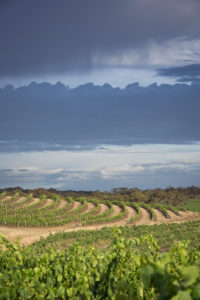 Located near Greenock in the Western Barossa ranges of the Barossa Valley, the farm at Alkina was established in 2015 when Alejandro Bulgheroni, an Argentinian vintner, purchased the property. Vineyards in various states of neglect, planted 60 years prior, along with old stone buildings built by German immigrants adorned the property.
Located near Greenock in the Western Barossa ranges of the Barossa Valley, the farm at Alkina was established in 2015 when Alejandro Bulgheroni, an Argentinian vintner, purchased the property. Vineyards in various states of neglect, planted 60 years prior, along with old stone buildings built by German immigrants adorned the property.
With the knowledge that the traditional custodians were the Ngadjuri people, Bulgheroni, along with winemaker Amelia Nolan, wanted to honor the land’s Aboriginal history. Their philosophy from day one has been a spiritual relationship with the land and the idea of guardianship rather than ownership. This easily led to the omission of synthetic chemicals and promotion of all things organic and biodynamic.
Some regions have difficulty in keeping to organic and biodynamic standards but the Barossa Valley is warm and dry with these vineyard sites having the added advantage of being particularly windy, which aides in tempering disease pressures. This in conjunction with the farm elements surrounding and supporting the vineyard as a complete ecosystem.
One example of this process is use of a comprehensive insect survey done on site. They identified 12,500 individual species on the farm, including lots of beneficial insects and native bee species. From this data, they could plant vegetation that attracted the beneficial and predatory insects while helping to control vine pests.
The Winery
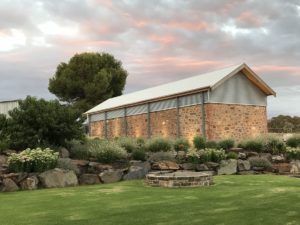 An old stone barn was renovated using rock harvested from the property and repurposed as their small winery, bringing the Alkina brand to life. The name “Alkina” is an indigenous female name meaning moon or moonlight, fittingly paying homage to both the history and biodynamic philosophies implemented here.
An old stone barn was renovated using rock harvested from the property and repurposed as their small winery, bringing the Alkina brand to life. The name “Alkina” is an indigenous female name meaning moon or moonlight, fittingly paying homage to both the history and biodynamic philosophies implemented here.
The small-scale winemaking promotes the use of multiple vessels for the creation of their micro-terroir wines. The use of traditional old barrels sits alongside small concrete eggs from France, tulip shaped concrete fermenters and clay amphorae from Italy, and even a qvevri from Georgia. All the grapes are hand harvested and even the yeast for their ferments is naturally occurring on site. This truly is a unique and special situation that has all the right components for the creation of terroir-driven wines.
When questioned about wine making mantras, winemaker Amelia Nolan stated that there are six enemies of terroir wine: over-ripening, over-extraction, invasive oak, synthetic chemicals, the winemaker’s ego and market-led winemaking. Well said.
The Wines
2021 Kin Red Semillon (Barossa Valley) – $35
As a note to remove confusion, the 2021 has “Red Semillon” on the label and the 2022 has “Pink Semillon”. The block was originally planted with Semillon but evolved to Semillon, Semillon Gris (red skinned) and some odd Shiraz vines. This serendipitous wine is a result of that natural field blend.
One first notices the interesting light copper hue to the wine, a nod to the red skinned Semillon Gris and Shiraz. The nose has citrus elements (tangerine, blood orange), citrus blossom, bees wax, brined melon, and a slight green herbal component. The palate is dry with a tart briny citrus acidity, a slightly viscous texture, and a very slight perception of tannin on the gums. The flavors mirror the nose with some added brined wet-stone minerality and addition of some orchard fruit. The finish lingers with a citrus and tangy brine embrace. At this 12.2% abv, you could sip this with complete disregard. This interesting skin contact wine has this wine geek wanting more. With only 2160 bottles made, I will, most likely, have to wait for the next vintage. This is an easy sipper or pair with grilled fish (trout), poached fish (halibut / sea bass) and shrimp pasta dishes.
2021 Kin Grenache (Barossa Valley) – $35
The wine is 100% Grenache coming from two different blocks in the vineyard, one on schist and clay and the other on quartzite and limestone. Even though the plantings are a mix of trellised and bush vines, they are all hand harvested and fermented in separate parcels (concrete tulips), with an average of 50% whole cluster.
The wine has a juicy ripe red fruit element (strawberry, cherry, raspberry), spice (cinnamon), and a vibrant freshness. The palate is dry with crunchy acidity, medium body and opens with a certain elegance. There are flavors of red fruit, savory spice and a stony minerality. As the wine progresses on the palate the chalky tannins emerge and crescendo on the finish. The analogy of prim and proper in public but somewhat naughty after the lights go out pertains to this wine. You really have to sample it to gain an understanding of its personality. Pair with pan seared lamb chops, North African Tagine dishes, or roasted pork belly.

